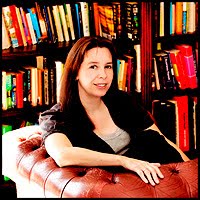 Some time ago, I blogged about a "Jamesian adventure" I had had, researching the history of a rather sinister-sound local folksong centred on the ruined church shown to the left. I'm an absolute sucker for anything like that - I love spooky snippets of local culture!
Some time ago, I blogged about a "Jamesian adventure" I had had, researching the history of a rather sinister-sound local folksong centred on the ruined church shown to the left. I'm an absolute sucker for anything like that - I love spooky snippets of local culture!
When I was writing my most recent novel, Too Near The Dead, I couldn't resist putting a local folk song in. My hero and heroine, James and Fen, go to the local pub for an evening of live music. Everything is very jolly until the folk band, who aren't from the town, start playing a song called Lavender Lady. This is what happens:
"People are clapping and singing along, James included. So it’s a surprise when the next song strikes up and there’s a noticeable drop in the sound levels. At first I think they’re all just trying to listen, because this one is a ballad – it’s slower and softer, almost melancholy. I pick out fragments of the words: dark, dark the night... she will come back to you... and something that sounds like she’ll put ye on like a suit of clothes, though perhaps I have misheard that because it doesn’t make any sense. I look from face to face and see that the grins have been wiped right off them. Some look neutral, some downright stony. Nobody likes this song, for some reason. A few heads shake. And Seonaid gives me a sidelong glance.
It’s a wary glance, the sort of glance you give someone if you know someone else has said something potentially offensive in front of them. In spite of all the empty glasses crowded onto the table top, she’s not so drunk that she doesn’t notice me react. She looks down, quickly, and then away."
Anyway, yesterday evening life imitated art, as my husband and I went to see a real life folk music performance - carefully socially distanced in our local park. (Hat tip Strathearn Arts, who managed to bag us some last minute tickets.) The duo we went to see are called Plaidsong and I know Nicky, the singer, from Culture Perth and Kinross events.
The second song they performed was actually the song about the "Terrible Parish" of Kinkell, and before they did it, Nicky was kind enough to mention me, as I had told her about its origins (some people think it is about Dunkeld, but it isn't). So that was very nice! And it was absolutely amazing to hear the song performed live. Genuine goosebumps for me!



Jesus, have mercy on our souls...
ReplyDelete